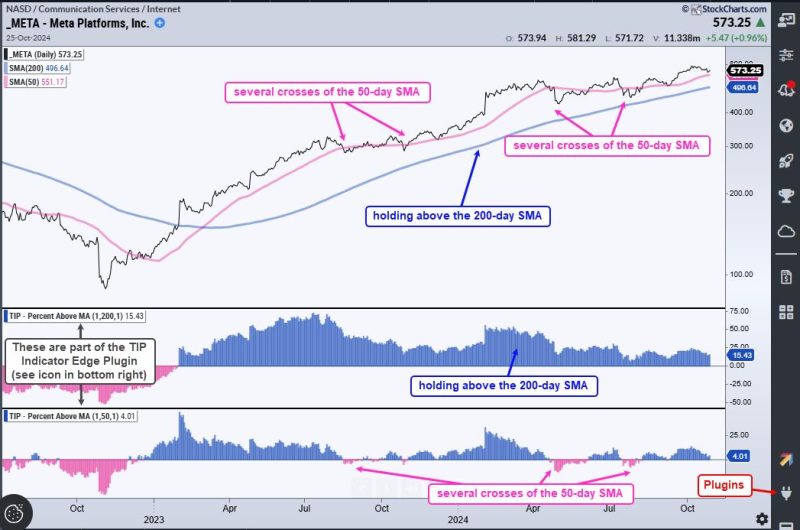Constantly striving to improve your trading edge is a crucial process for every investor. Two indicators that stand out in this pursuit are Relative Strength Index (RSI) and Moving Average Convergence Divergence (MACD). These tools, when used effectively, can potentially increase your gains in the financial market by offering insights into price direction and market momentum, thus enhancing your trading strategy.
The first tool, Relative Strength Index (RSI), is a popular momentum oscillator developed by J. Welles Wilder. It measures the speed and change of price movements by comparing the magnitude of recent gains and losses over a specified time period, typically 14 periods to gauge whether a particular stock or asset is overbought or oversold.
With scales from 0 to 100, RSI provides a gauge for market sentiment. A reading above 70 generally is known as ‘overbought’, indicating a possible downward reversal in price. On the contrary, an RSI reading below 30 is termed ‘oversold’, signifying a potential upward price correction. It’s critical to note that while RSI aids in identifying possible reversal zones, it doesn’t provide timing indicators for these reversals, hence one needs to complement it with other trading indicators.
Additionally, divergence is a powerful part of the RSI tool. If the price of an asset increases while the RSI decreases, or vice versa, this is called divergence. For traders, it can potentially indicate an upcoming reversal. It can act as an early warning system for traders to adjust their current trading position.
Next, the Moving Average Convergence Divergence (MACD) is another essential tool for improving your trading edge. It’s a trend-following momentum indicator that exhibits the relationship between two moving averages of a security’s price. The MACD is calculated by subtracting the 26-period Exponential Moving Average (EMA) from the 12-period EMA.
The resultant line is then plotted against the nine-day EMA, known as the signal line, to identify trading opportunities. When the MACD crosses above its signal line, it gives a bullish signal, indicating it might be a nice time to buy. Conversely, if the MACD line crosses below the signal line, it’s considered a bearish signal, which suggests it might be an opportune time to sell.
Moreover, the MACD histogram, which represents the difference between the MACD line and its signal line, is also crucial in identifying market sentiments. When the MACD line is above the signal line, the histogram will be positive, implying bullish market momentum. Conversely, when the signal line is above the MACD line, the histogram is negative, indicating bearish momentum.
Importantly, both RSI and MACD are only tools in a larger toolbox of trading strategies. While they provide helpful input for making better trading decisions, they should not stand alone. No single indicator can predict market movements perfectly. Just like other indicators, RSI and MACD should be used in conjunction with other assessment tools and fundamentals to create a total picture of the potential market trajectory.
Ultimately, whether you’re a seasoned investor or a newcomer in the world of trading, using these tools to improve your trading edge can potentially result in higher potential gains and reduced risk. It’s always wise to apply different indicators and strategies and remain cognizant of market changes.
